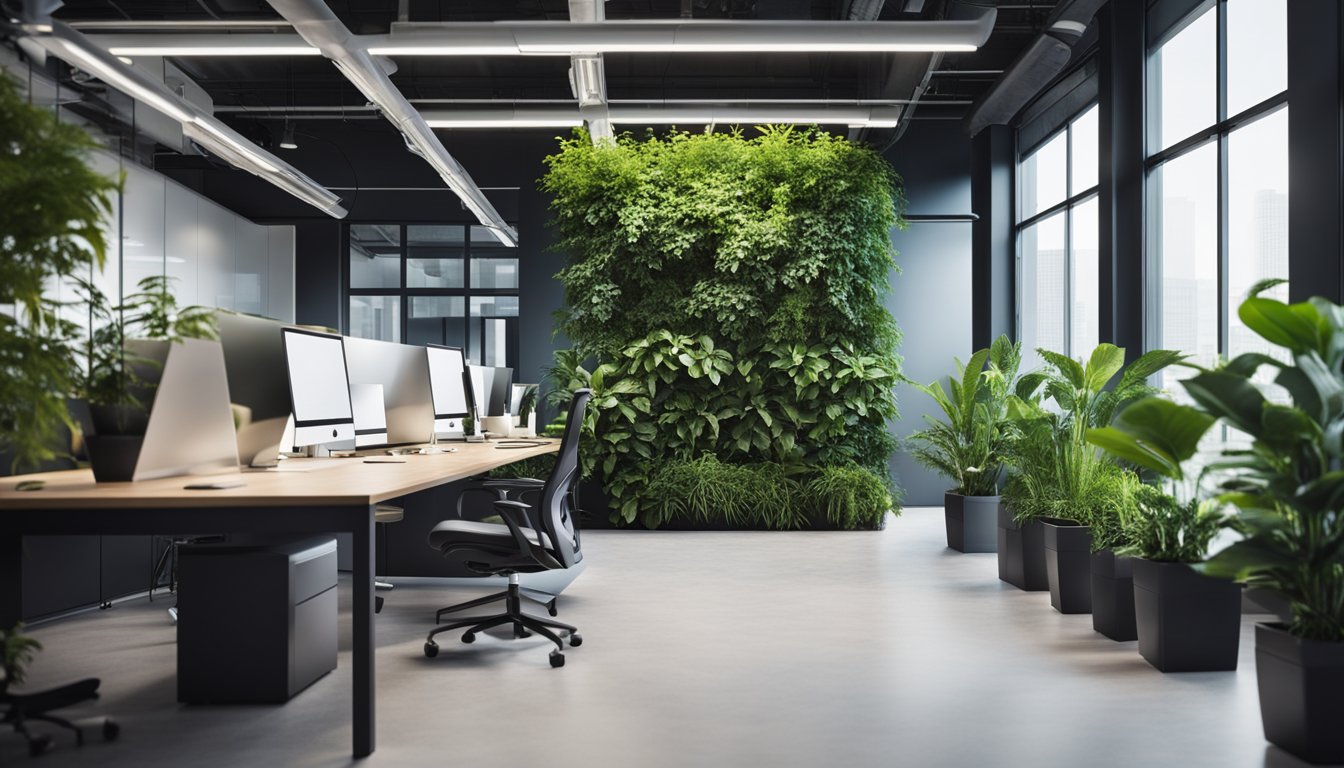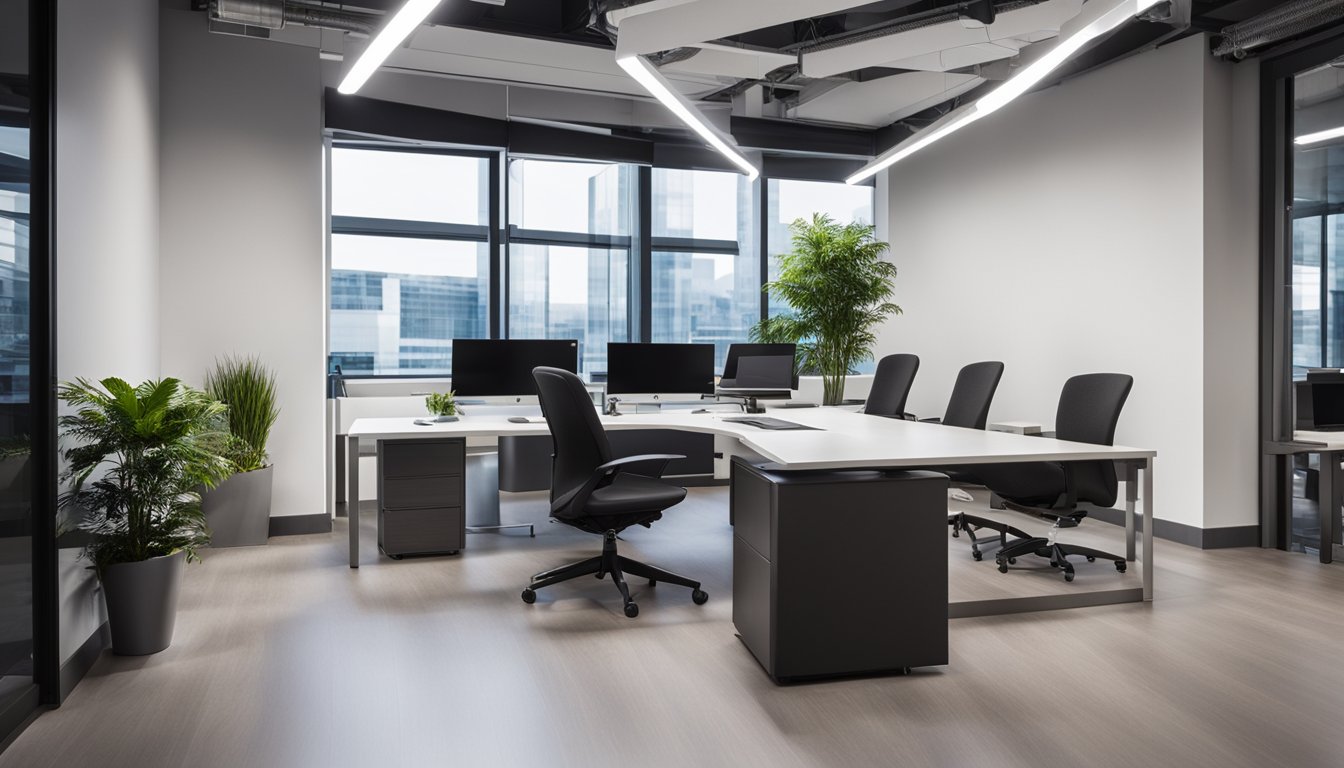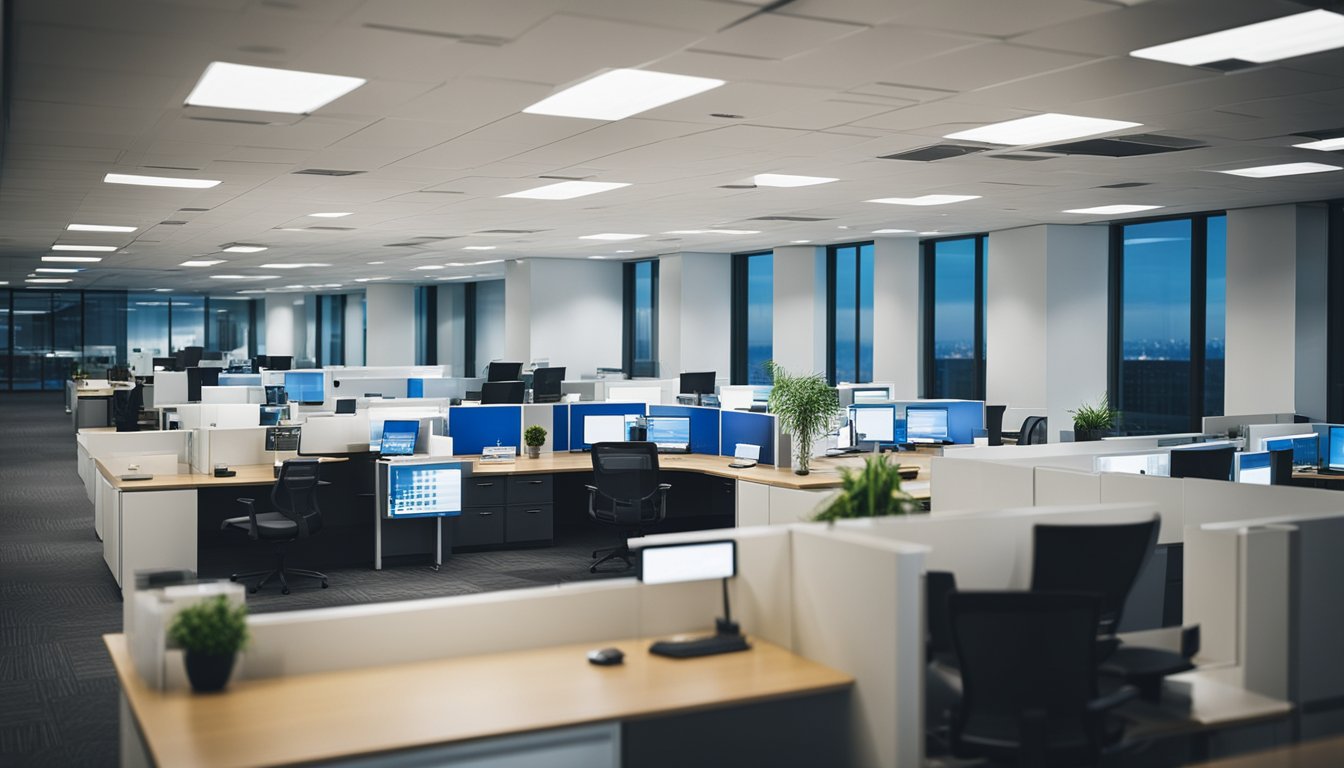Late updated: 02 Aug 2024 10:08
Written by: Amber Collins
Making UK Businesses Greener With LED Lighting: A Sustainable Future
In today's rapidly evolving business landscape, sustainability is not just a buzzword; it's a competitive advantage. Our focus is on one of the simplest yet most effective steps UK businesses can take to become greener: switching to LED lighting. This transition is not just about fulfilling corporate social responsibilities—it’s about achieving significant cost savings and boosting overall efficiency.

LED lighting offers unparalleled benefits. These energy-efficient lights can reduce lighting costs by up to 90%, providing a substantial return on investment. Beyond the financial savings, LEDs also contribute to lower carbon emissions, aligning with the UK's net zero goals. Given that a mere 20% reduction in energy costs can equate to a 5% increase in sales, it's clear that the potential benefits extend beyond sustainability, impacting the bottom line.
Implementation is straightforward. Retrofitting existing fixtures with LED bulbs is a quick win for businesses looking to decarbonise. In fact, the UK National Highways' recent £132 million initiative to retrofit road lighting proves the feasibility and impact of such projects. Let's explore how adopting LED technology can make a tangible difference for your business.
Key Takeaways
- Switching to LED lighting can reduce energy costs by up to 90%.
- LED lighting supports the UK's net zero goals and offers substantial carbon emission reductions.
- Retrofitting with LEDs is a quick and impactful way to enhance sustainability and cut costs.
Benefits of LED Lighting for UK Businesses
Incorporating LED lighting into UK businesses offers substantial benefits, including energy efficiency, cost savings, and enhanced working environments. Each of these factors contributes to creating a more sustainable and productive business model.
Energy Efficiency and Sustainability
LEDs are renowned for their energy efficiency. They consume significantly less power compared to traditional incandescent and fluorescent lighting. For context, LED bulbs use roughly 75% less energy than incandescent bulbs and up to 80% less than certain fluorescent bulbs.
This reduction in energy consumption leads to a lower carbon footprint and reduced greenhouse gas emissions. By opting for LEDs, businesses align with eco-friendly practices and contribute to broader environmental goals. Additionally, this energy efficiency directly supports the UK’s ambitions for net zero.
Cost Savings and Economic Advantages
Switching to LED lighting results in notable cost savings. Lower energy usage translates to reduced electricity bills, which is particularly beneficial for businesses with extensive lighting needs.
Beyond lower electricity costs, LEDs have longer lifespans, reducing maintenance costs and the frequency of replacements. The initial investment in LED lighting is typically offset by the rapid return on investment seen through these ongoing savings. Furthermore, UK businesses can often benefit from government incentives aimed at promoting energy-efficient upgrades.
Enhancing Business Environments
The quality of light provided by LEDs can enhance business environments. LEDs offer a wide range of colour temperatures and superior light quality, which can improve visibility and create a more pleasant workspace.
Good lighting is linked to increased productivity and better employee well-being. Proper illumination reduces eye strain and fatigue, leading to a healthier working atmosphere. Moreover, the flexibility of LED fixtures allows for tailored lighting solutions that can adapt to various business needs, from retail to office settings.
Implementing LED Technology in UK Businesses

In this section, we focus on how UK businesses can implement LED technology effectively. We will explore retrofitting existing lighting, financing options, and the benefits of compliance and environmental leadership.
Retrofitting and LED Solutions
Retrofitting existing buildings with LED lighting is a practical step towards sustainability. By replacing outdated lighting fixtures with energy-efficient LEDs, businesses can significantly reduce energy consumption. LED technology offers longer lifespan and lower maintenance costs compared to traditional lighting. Many commercial applications benefit from LEDs due to their versatility in design and brightness levels. Retrofits are often less invasive than complete overhauls, enabling smoother transitions and minimal disruptions to operations.
Financing and Incentives for LED Adoption
Capital investment in LED lighting can be offset through various financing options and incentives. The UK government offers schemes such as Capital Allowances, which provide tax relief on energy-efficient equipment. Businesses can also explore partnerships with LED lighting solutions providers who may offer leasing options. Additionally, funding from private organisations and grants aimed at promoting sustainable practices can further reduce initial capital outlay. Properly navigating these options can make transitioning to LED technology more feasible and financially advantageous.
Compliance and Environmental Leadership
Adopting LED technology aligns businesses with national and international standards for sustainability. Compliance with these standards can enhance a company's reputation and demonstrate a commitment to net-zero emissions. Moreover, it positions businesses as leaders in a circular economy, focusing on reduced waste and environmental impact. Manufacturing and design practices that incorporate LED lighting also contribute to sustainable development. By leading in environmental compliance, businesses can attract environmentally conscious clients and partners, fostering long-term growth and stability.
Frequently Asked Questions

Switching to LED lighting offers UK businesses numerous environmental and economic advantages. These benefits range from reducing carbon footprints and light pollution to taking advantage of government incentives and longer-lasting bulbs.
What are the environmental benefits of using LED lighting in UK businesses?
LED lighting is highly energy-efficient, reducing electricity consumption significantly. This leads to lower carbon emissions and a smaller ecological footprint. LEDs also do not contain hazardous materials like mercury, which makes them safer for the environment.
How can LED lights contribute to the reduction of light pollution?
LED lights can be directed more precisely than traditional lights, reducing spillage into unwanted areas. This precision helps minimize light pollution, making night skies clearer and more visible. Properly designed LED systems can focus light only where needed, enhancing visibility without contributing to urban light pollution.
Is there an economic advantage to using LED bulbs for UK companies?
LED lighting can reduce energy bills by up to 90%, offering significant cost savings. The longevity of LEDs reduces maintenance and replacement costs, providing a strong return on investment. For businesses, a notable reduction in energy costs can be as impactful as a substantial increase in sales.
In what ways are LED lights considered eco-friendly?
LEDs are more energy-efficient compared to traditional lighting options. They emit less heat and have lower power consumption, decreasing greenhouse gas emissions. Additionally, due to their durability and longevity, they contribute less to landfill waste, aligning with eco-friendly business practices.
What incentives are available for UK businesses to switch to LED lighting?
The UK government offers various tax benefits and subsidies for businesses investing in green technologies, including LEDs. Companies can access grants and subsidies aimed at promoting renewable energy solutions, making it financially attractive to transition to LED lighting solutions.
How does the lifespan of LED bulbs compare to traditional lighting options?
LED bulbs have a longer lifespan, often lasting up to 25,000 to 50,000 hours. This duration is significantly higher than traditional incandescent or fluorescent bulbs. The extended lifespan means fewer replacements and reduced maintenance efforts, translating to cost and time savings for businesses.
